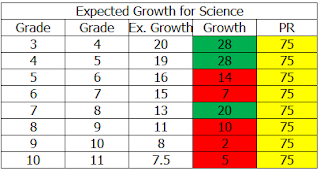If you had a chance to read the Hudson Herald last week you probably noticed our school district has been the beneficiary of many new teachers. You can read all about our new teaching staff in the Herald or on the school website. Teacher turnover in Hudson is generally pretty low: between one to three teachers annually. So imagine having this many new teachers join our ranks, it is quite an anomaly! The primary reason for the high turnover was that a large number of faculty took advantage of an early retirement incentive that was offered by the school district last spring. Additionally, we had a couple of faculty members move to Colorado over the summer, and another was offered a position in her hometown.
 |
| New teachers meet with teacher leaders during new teacher luncheon prior to school starting. |
When all those teachers retired, resigned, or moved to Colorado, they took a great deal of institutional knowledge with them, especially those who retired. There is no doubt they left a void in the school where their experience will be sorely missed. I expect for the next several months these new teachers will become accustomed to hearing things from their students like, "Mr. (or Mrs.) fill in the blank didn't do it that way!".
This past spring, building principals began the task of finding replacements for each of these teachers. Along with the numerous qualifications, credentials, and endorsements that we were searching for, we were also looking for teachers that were the right fit in our system. Teachers that parents would trust, and that we wanted in our school system for a very long time. Our hiring plan was to get into the market early so we would be able to maximize the number of applicants and candidates for our open positions. Fortunately we were blessed with an incredibly deep pool of applicants and had numerous choices. Indeed if you have had the chance to meet some of our new faculty or are lucky enough to find one of your children in their classrooms, you hopefully would agree.
By the time school was dismissed for the summer we had all our hires in place and were looking forward to getting on with all the projects that would consume the heat of the long summer days. But we all know the story doesn't end there, right? At the end of June, our Chemistry teacher was hired to replace her longtime mentor and high school Chemistry teacher. Right on the heals of that, our 7-12 school counselor moved to Colorado.
It was time to ramp up the hiring machinery once again, right in the midst of summer when most 'candidates' are no longer candidates, but employed teachers.
It was time to ramp up the hiring machinery once again, right in the midst of summer when most 'candidates' are no longer candidates, but employed teachers.
In the grand scheme we got lucky. We were able to find outstanding educators. As it turns out, our new Chemistry teacher is trained in the International Baccalaureate (IB) program. A great find for us; but not so great scenario for Waterloo. They decided they just weren't going to let him go quite so easily. After a few weeks of negotiations, Waterloo agreed to share his services for the year. We would be able to employ him in the morning to teach our Chemistry courses, in the afternoon he will teach in Waterloo's IB program. This left the other half of this position vacant: 8th grade science. Our Chemistry teacher was to teach high school courses in the morning and, you guessed it: 8th grade science in the afternoon! We could have passed on this teacher and tried to hold out for someone who could fill this position full time, but to find an educator of this quality was just not something we could let pass us by. We decided to look at the big picture and the overall future of the district's science program. That leaves us in the very unpleasant situation of filling our half-time science position with a substitute teacher until a suitable replacement can be found.
Yet here is the rub: not only is it difficult to find quality teachers in some disciplines, it is just difficult to find teachers in general this time of year! Unlike some elementary teaching positions where there can literally be hundreds of applicants for one position, many specialized content areas may yield only a handful of applicants. It is made even worse when the position you are searching for is only half-time! After all, who is really looking to be employed half-time? Further, who is looking to be employed half-time in a position that is only going to be available this year!
Unfortunately this phenomenon isn't new to Hudson or many schools around the state just like us. Size of student body dictates the number of full time equivalency (FTE) that can be devoted to a particular discipline. We can't very well employ a full time teacher if we only have students to fill up three or four classes. And young people going into the hard sciences, math, music, or a whole plethora of other content area just aren't becoming teachers. Indeed in most cases they can earn more working in industry then they can in education.
Our search for an 8th grade science teacher will continue. We have sent out hundreds of email messages to candidates. We have also interviewed candidates, candidates who are qualified and endorsed for the position. Yet at the end of the day they either turn us down, or it just isn't the right fit for our school. Within my administrative team we have discussed extensively our options: should we just hire someone that has the right endorsement in order to 'check the box' or do we continue to seek out the right person? For now, we keep looking. We owe that to our students.






